|
Mariculture
|
| Package of practices for cultured pearl production was developed and standardised. | |
| 15 species of commercially important crustaceans were bred under captivity and their eggs and larvae reared successfully. | |
| Rendered consultancy service to the government and private organisations in installation and management of shrimp hatcheries. | |
| Low cost shrimp feed Mahima was developed and the technology was successfully transferred to the coastal fisherwomen. | |
| Package of practices for edible oyster culture, green and brown mussel was developed. |
| Hatchery technology for mass production of the seed of pearl oyster, edible oyster, mussel and clams was developed. | |
| Developed technology for artificial insemination of tiger prawn. | |
| Developed the technology for land based pearl culture and production. | |
| Longline mussel culture technology was developed with the active involvement of fishermen | |
| Culture of seaweeds in open coastal waters was undertaken and the commercial feasibility was demonstrated | |
| Developed technology packages for the culture of marine shrimps, crabs, mussels, edible oysters, clams, sea weeds and sea cucumbers. | |
| Developed technology for the breeding and culture of marine ornamental fishes like clown fish, and sea horse. | |
| Technologies for the mass production of live feed organisms have been developed. | |
| Developed new food formulation for culture of shell fishes | |
| Genetic differentiation of commercially important stocks using DNA finger printing | |
| Developed DNA finger prints for fish and shell fish pathogens |
| Seed Production | |
| Experimental Farming | |
| Tagging of Prawns | |
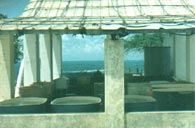 Backyard shrimp hatchery at CMFRI, Mandapam |
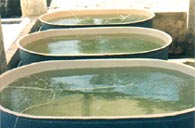 Larval rearing tanks |
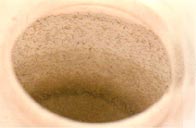 Post larvae of Penaeus semisulcatus produced at Mandapam hatchery |
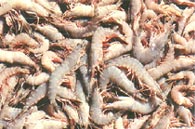 A view of harvested P.semisulcatus cultured at Mandapam shrimp farm |
| Seed Production | |
| Broodstock Development | |
| Farming & Sea Ranching of Spiny & sand Lobsters | |
| Successful maturation and breeding of the spiny lobster Panulirus homarus was achieved by regulation of light intensity (500 lux) and on feeding with green mussel | |
| Fecundity, egg quality and percent hatch of captive lobsters is higher than broodstock obtained from the wild. Feeding phyllosoma larvae with Artemia nauplii hatched out from infected cysts leads to protozoan infestation. Treatment of cysts with chlorine at 200 ppm for 10 minutes keeps the larvae free from infection. | |
| Delay in feeding of phyllosoma larvae by 24 hrs. after hatching may result in delayed moulting and low survival. | |
| Short term fattening of lower priced smaller grade lobster to a higher priced larger grade is profitable |
| Cultured lobsters | ||||
 |
 Phyllosoma larvae of lobster |
 Puerulii of spiny lobster Panulirus polyphagus |
 Post puerulii of the lobster P. polyphagus |
 Lobster culture tanks – view from the lobster hatchery at Calicut |
| Mariculture of crabs | ||||||
|
||||||
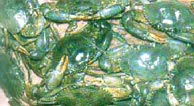 Mud crabs after fattening |
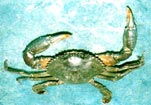 Scylla tranquebarica |
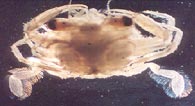 Baby crab of Portunus pelagicus |
||||
|